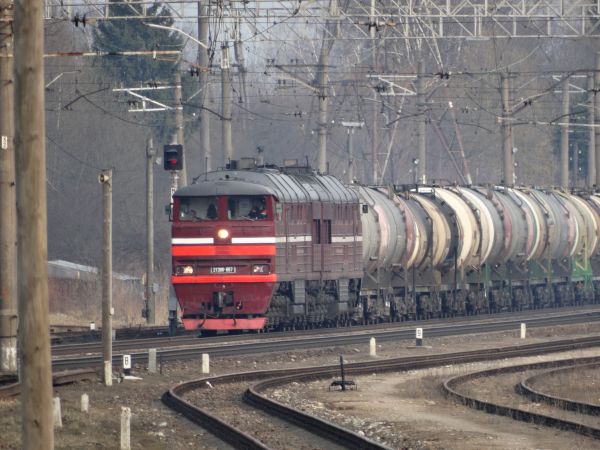

After Soviet Union forcefully annexed all three Baltic small states Estonia, Latvia and Lithuania, they started developing
their railways as one and the same system under the name Baltic railroads. The operational center of Baltic railroads was
in Riga, Latvia. After the three countries suddenly regained their independence, they were left with whatever rolling stock
happened to be inside their borders. The trains were divided amongst the states. All the rolling stock was old and worn.
Now in 2017 Estonia and especially Lithuania have already received a lot of modern western rolling stock, whereas the trains
in Latvia still look pretty much like during the Soviet Union days - except for some repainting and modest repairs. Typical of
Latvia today is first of all active suburban passenger train service around the capital Riga and then also very heavy cargo
traffic, which mostly means hauling extremely heavy Russian or Belorussian (Belarus) trainloads through the country to large ports by the
Baltic Sea, for example to Klaipeda port.
This picture shows a typical Russian crude oil train hauled by one of the really huge Soviet time cargo locomotives of the class
2TE116. The train is probably heading towards Klaipeda. Picture taken at Salaspils station, just south of Riga, on 1.4.2017
by Ilkka Siissalo.
FUNET railway pictures archive - Latvia
Picture categories
- Electric multiple units, suburban trains around Riga
- Diesel passenger trains for longer routes
- Cargo trains
- Railway museums in Riga and Gulbene
- Trams of Riga, Liepaja and Daugavpils
- Aluksne-Gulbene narrow gauge railway
This is a very typical suburban service EMU train around Riga. These class ER2 trains were made by RVR in Riga during the Soviet times. The Latvians have already tried to buy more modern trains, but their public tendering resulted in litigation, so the 1960s style Soviet trains still continue their service. Picture of an ER2 unit at Salaspils station 1.4.2017 by Ilkka Siissalo.
A schematic picture of the railways of Latvia in 2008. Picture by the Latvian state railways LDZ. The 33 km long narrow gauge line still in operation between Gulbene and Aluksne is missing from the picture. Click on the picture to see it in full scale.


